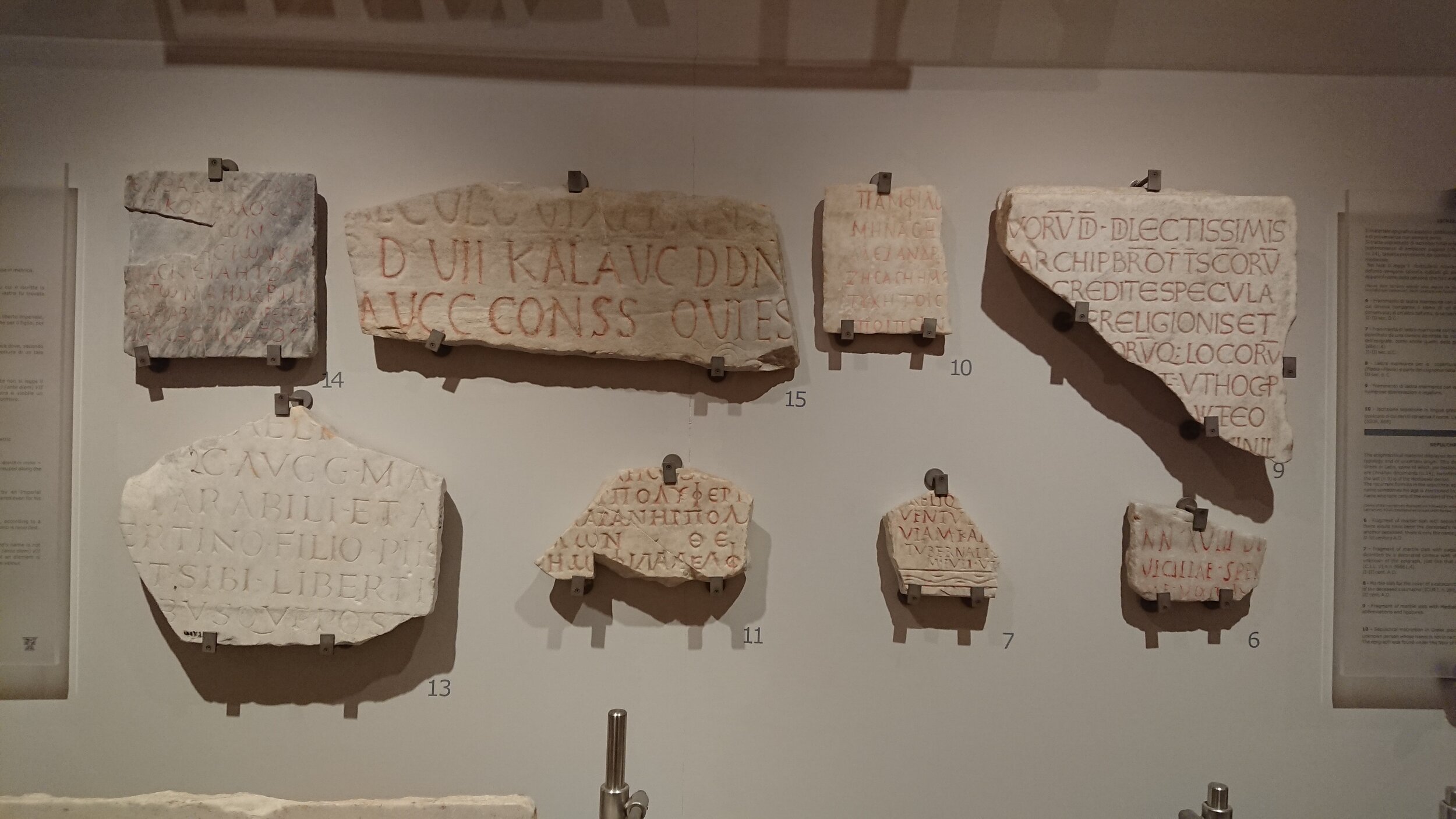About
Project Description
My DPhil topic (supervised by Professor Ine Jacobs) focuses on the lived experience of Roman elites in Late Antiquity. My first case study is the residential complex under the Basilica San Giovanni e Paolo (the so-called Case Romane del Celio) in Rome.
Through the lens of the palimpsest (vis-à-vis George Bailey), I am diachronically modelling both the architecture and the finds in the space using a computational, 3D approach. This will, in turn, allow for a detailed examination of how various spatial interactions and room functions were changing over time. This same methodology will then be applied to a few case studies focusing on sites in Asia Minor and North Africa. I will complete the fieldwork for the first case study in March and finish the 2nd and 3rd case studies by the end of next year.
This past year has been productive for my DPhil project. I have just completed a draft of my first chapter, and have a clear idea of my methodological framework, as well as how to asses future case studies.
A crucial component of my DPhil project, entitled "Elite Identity in Domestic Space: Architectural Change and Redecoration in Late Antique Houses" is the notion of the "palimpsest," or how different phases of maintenance and function in Roman domestic spaces changed over time. This methodology involves recording each find and architectural change individually in the three central case studies for the DPhil project.
The first case study in the project focused on a site in Rome: the so-called "Case Romane del Celio" or "Roman Houses on the Celio," located under the Basilica Santi Giovanni e Paolo. I am applying for this supplemental grant to 1) check observations made based on the archival research conduction to date; 2) photograph the finds on display in the site antiquarium and in storage; 3) scan a few of the small finds using the “photogrammetry smartphone protocol” developed by Professor Jacobs through the TORCH KE Fellowship.
In short, I will produce a diachronic, digital model of the architecture and finds for the site. The georeferenced, scaled 3D model will simply be a tool to visually record, analyse, and study how the building and its finds and interior decor changed over time.
During the Christmas vacation, I had planned to complete the preliminary stages of this work (which is crucial to the larger methodology proposed for my DPhil). I postponed this fieldwork, however, due to travel delays relating to the omicron variant of COVID-19. Despite these difficulties, I was thankfully still able to complete the 3D scan, with the aid of a remote team from the Politecnico di Milano. In the second half of Hilary Term of 2022, I propose to travel to Rome and complete the second half of the scanning and documentation work. The permit for this stage of the research is already in place.
The photographs and 3D scans of the finds collected from this trip will form an open-access “digital catalogue” which will be especially important for the unpublished material on-site. Each catalogue entry will contain a “georeferenced URL” into a 3D model of the Case Romane (the first stage of this model, the initial scan, is already complete). Similar to work that has already been undertaken by scholars working in Pompeii (see Dell'Unto 2016), this combined work of the 3D model of the site and the 3D models of the finds will form the base layer in a forthcoming, annotated, reconstruction of four major phases in the Case Romane del Celio.
